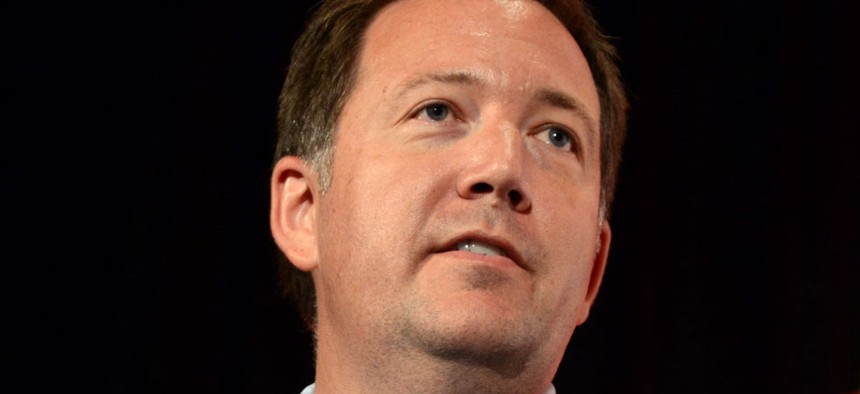Federal Tech Funding Dips Slightly in Obama’s Fiscal 2015 Request

Caitlin Fairchild/Nextgov file photo
VanRoekel touts a 'one-government, outside-looking-in approach' to federal IT.
Funding for civilian information technology projects and maintenance is essentially flat in President Obama’s proposed budget for the 2015 fiscal year, and the Defense Department's requested technology allowance is down slightly, federal Chief Information Officer Steven VanRoekel said during a conference call on Tuesday.
The 2015 request for information technology spending is about $79.1 billion, including $43.7 billion for civilian IT and $35.4 billion for defense, VanRoekel said. That’s down from about $81.4 billion enacted in the 2014 fiscal year.
The lower number is possible thanks to an increase in shared technology services across government and strategic sourcing for commodity IT such as computers and Internet service, VanRoekel said.
The overall technology spending figure is in line with previous Obama administration budgets, which have flatlined technology spending at around $80 billion. During the Bush administration, government technology spending grew at about 7 percent annually.
During the coming budget year, VanRoekel’s office plans to expand its PortfolioStat initiative, which has saved the government roughly $1.6 billion so far, according to budget documents released on Tuesday. PortfolioStat is a top-to-bottom review of how agencies are buying commodity IT and managing basic services. The administration aims to save $2.5 billion through the program by late 2015, according to the document.
During the 2015 fiscal year, VanRoekel’s office hopes to expand PortfolioStat to focus more on increasing government efficiency and smoothing visitors' navigation across agencies' websites, contact centers and spheres of responsibility, he said.
“What we find talking to Americans out there is that they really view us not as a collection of agencies or even an org chart, but as one government,” he said. “So the approach we’re taking will be a one-government, outside-looking-in approach, versus inside-out, figuring out how do we break down those walls and silos to best serve [citizens].”
The government will also be looking for more opportunities to bring private sector technologists into government on a short-term basis in the coming year, VanRoekel said, though the details of the program are still being worked out.
The drive to tap private sector technologists for government work was driven partly by the successes of the Presidential Innovation Fellows, a program launched in 2012 to bring private sector innovators into agencies for six-month tours to focus on specific, thorny problems such as making federal technology contracts more accessible to small businesses.
“We also saw other instances, like HealthCare.gov, where bringing in, in a reactive way, external talent to work side by side with agencies can change outcomes,” VanRoekel said, referring to a team of nongovernment workers that helped bring the federal Obamacare marketplace into good working order two months after its disastrous launch.
The government also plans to increase the number of services that are shared across agencies, VanRoekel said. Notably, the Small Business Administration will be transitioning to a cloud-based email and calendar system during the next year rather than operating email on its own servers.



